Are you in search of increased privacy for your home’s front or backyard? Think about adopting living fences as an effective solution. These organic barriers have the potential to endure for decades, or sometimes even centuries, offering privacy while also enhancing your property’s aesthetic with a lively green flair, perfect for those who are fond of nature.
You can consider several living fence ideas, including shrubs, grasses, and trees. You can choose an all-natural fence, a vine fence supported with metal posts, or even a horizontal wood fence with potted plants.
Whatever living fence idea appeals to you will add that special touch of life, freshness, and even color to your fence. There are so many ideas that you can combine and customize to suit your needs and preferences.

The best living fence ideas for privacy
In its simplest form living fences are made out of plants. These plants can be trees, shrubs, and even grasses. However, there are ways to still have a living fence without waiting years for them to finally grow.
There are many ideas on the best living fences and we will explore all of them. We are going to classify the best living fence ideas for privacy into two categories; All natural and Using other materials
1. All-natural living fence ideas for privacy
A natural living fence for privacy is made up exclusively of plants. This can be a single plant or a combination of complementary plants. The idea is that the fence is made up entirely of plants and offers maximum privacy.
These ideas are a good choice for lovers of all natural barriers. How else to enjoy your private landscape if not as a fence? In general, you’ll want tall trees and shrubs that can block any outside view for optimal privacy.
Make sure to fill in any gaps with bushes and hedges and plant flowers for color and variety. I suggest mixing two or three different species. This allows you to create a natural effect and increase biodiversity.
There are several ideas for all-natural privacy fences. They include;
I. Shrubs
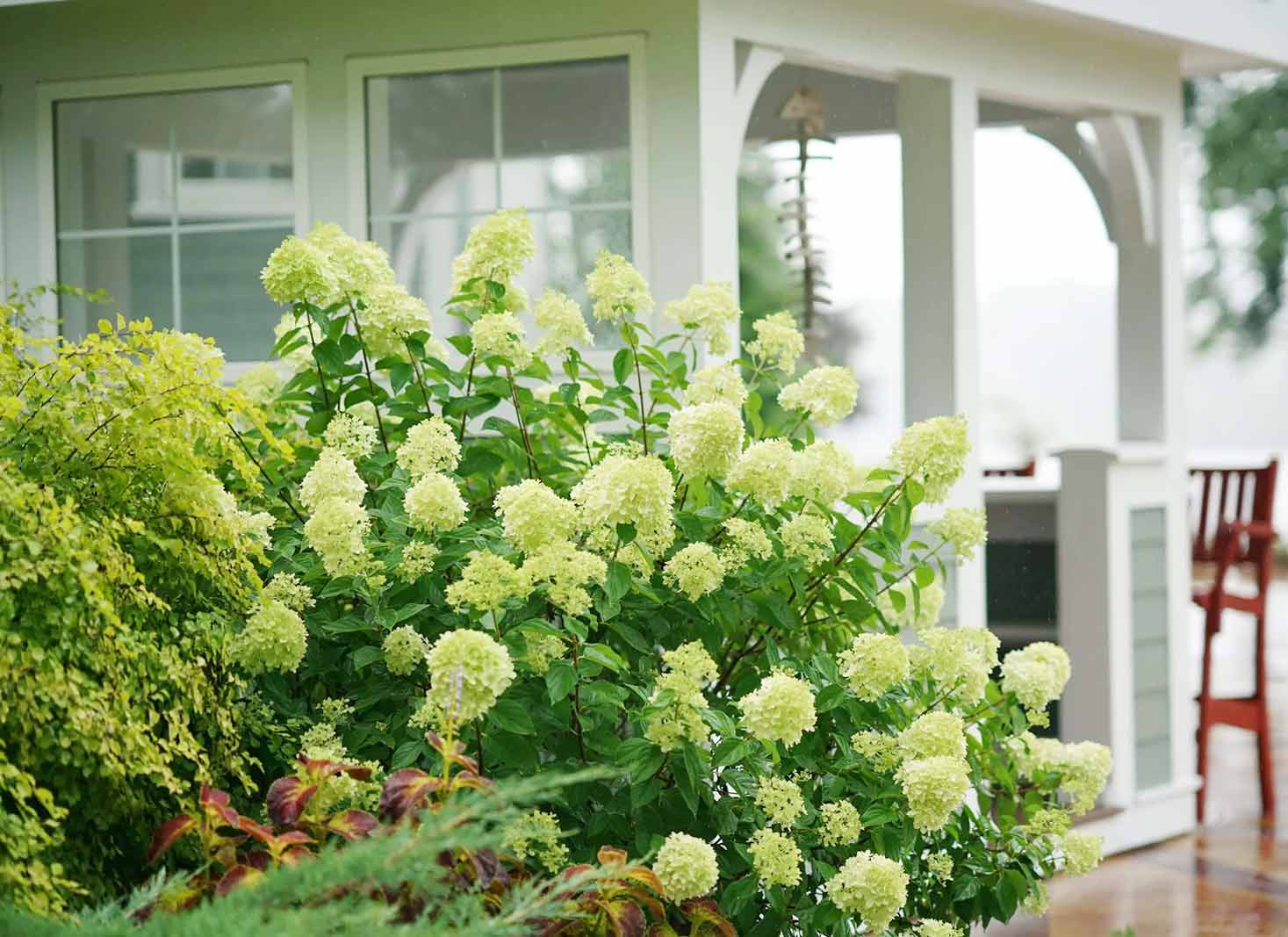
Shrubs are one of the most popular and best options for an all-natural living fence. They are versatile plants that come in different varieties from evergreen to deciduous, flowering and non-flowering, dense foliage and scanty foliage, dwarf-size and giant-sized, etc.
Shrubs have been used as living fences for centuries. You can decide to plant just one species or a combination depending on the aesthetics you are trying to achieve. An important thing to note when choosing shrubs to plant is the soil type, best growing zones, conditions, rate of growth, flowering or not, etc.
Some of the best shrubs for fences include Lilac, Weeping Willow, Euonymus, Laurels, Hicks Yew, Juniper, Boxwood, etc. Ensure that you purchase tall varieties of a shrub to ensure the best privacy living fence.
II. Grasses
When people think of grasses, they usually think of lawn grasses or weeds. However, those are just the common grass varieties. Many types of grass can be used to make a living fence e.g bamboo (Though a common misconception is that bamboo is grass, not a tree).
These grasses are usually referred to as ornamental grasses. These grasses usually come in different varieties, shapes, colors, etc. They can be evergreen or deciduous, tall or short, etc. if you decide to use grasses for the living fence, you don’t have to worry about privacy if you choose the right grass.
Ornamental grass like Ravenna grass and zebra grass can grow up to 10 ft in height ensuring maximum privacy from any passing eyes. Some of the best ornamental grass for a living privacy fence include; bamboo, Plumegrass, Big bluestem, Maiden grass, Zebra grass, Purple silver grass, Purple fountain grass, Ornamental millet, Blue oat grass, etc.
III. Trees

Trees are a good choice for a living fence, especially when prioritizing privacy. Thousands of tree varieties are available, so making the right choice is very important. Some of the best trees for a living fence include; Arborvitae, Concolor Fir, Red Cedar, Eastern White Pine, Japanese false cypress, Italian cypress, etc.
Your home’s type of tree nest will depend on a few factors. This includes the soil type, weather patterns (the amount of sunlight and rainfall), etc. Evergreen trees are usually better than deciduous trees for privacy fences as they do not shed, remain green all year, and can withstand cold weather.
For privacy from all corners, canopy trees or screening plants are the best options as they block the view between you and the upper-story sight line. This is a very good option, especially when living in a crowded area as it blocks out outsiders’ views, noise, and any unsightly views.
IV. Combination of trees, shrubs & grasses
Combining different types of plants is a living fence idea that can transform your landscape. You don’t always have to use the same species throughout the fence or the same type of plant. When combining plants, make sure to use plants with similar soil requirements and care.
There are different ways to combine trees, shrubs, and grasses. You can incorporate trees and shrubs by planting the shrubs between the trees to cover any open spots and improve privacy. The same method can be used to combine trees and grasses.
You can combine grasses and shrubs in two ways. One, plant a grass-like bamboo along the hedge and then plant the shrub behind it to cover any open spaces and improve privacy. Or for bush grasses, you can plant the shrub and grass alternately.
V. Wood & climbing vines
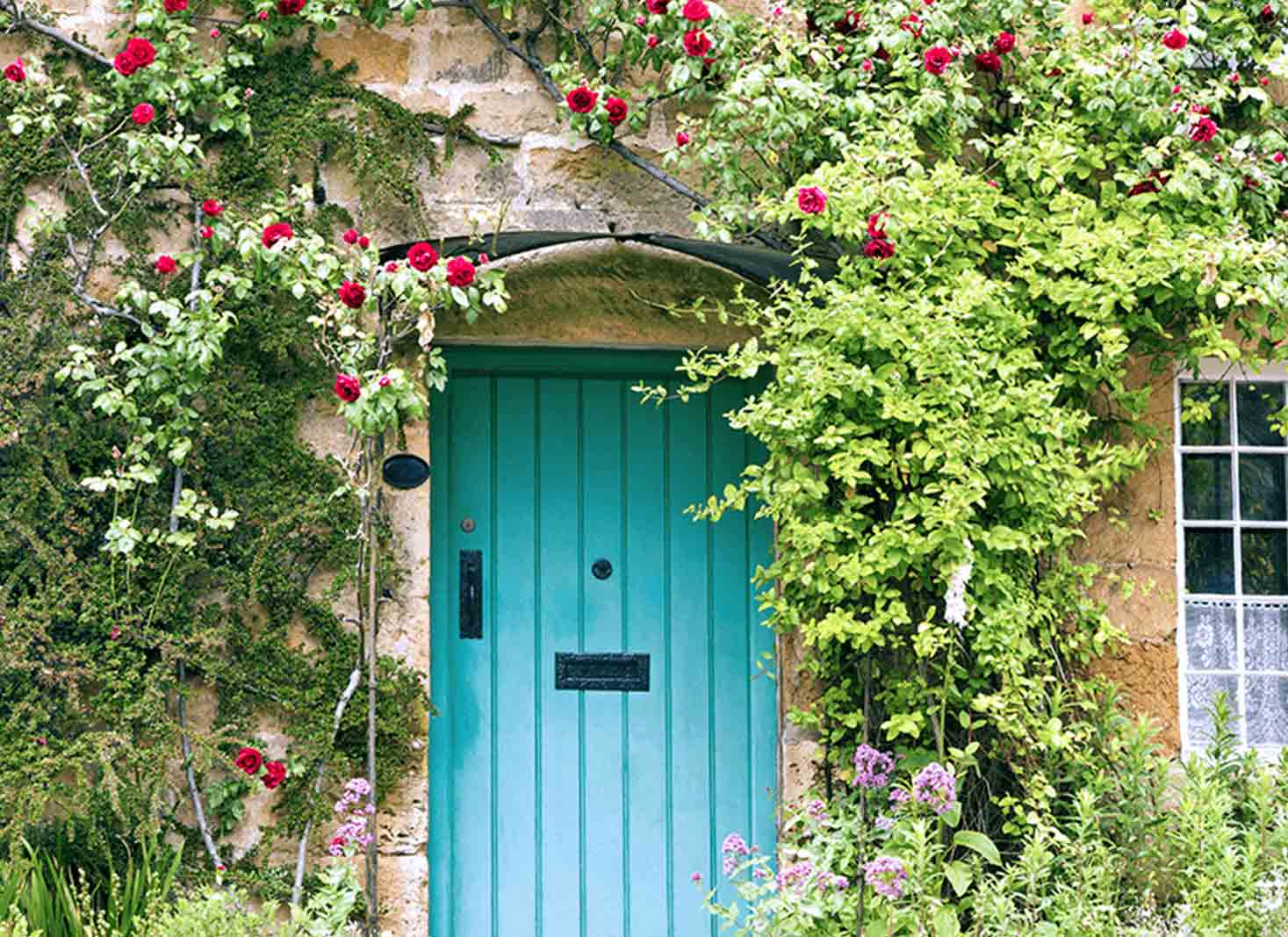
Using wood in a living fence keeps the theme of plants while providing support for plants that require it. Wood is a common option when choosing natural building materials for your privacy fence and one of the most affordable choices.
There are plenty of wood types to choose from. However, cedarwood is a recommended wood for privacy fences. You can use logs, planks, and wooden posts and combine them with plants. Vines are one of the best plants to combine wood with as they require support.
For privacy, make sure to place the wooden supports close to each other, then use the selected vines to block out any space between the wood. This provides a living privacy fence that is low maintenance and very aesthetically pleasing.
VI. Stone & plants
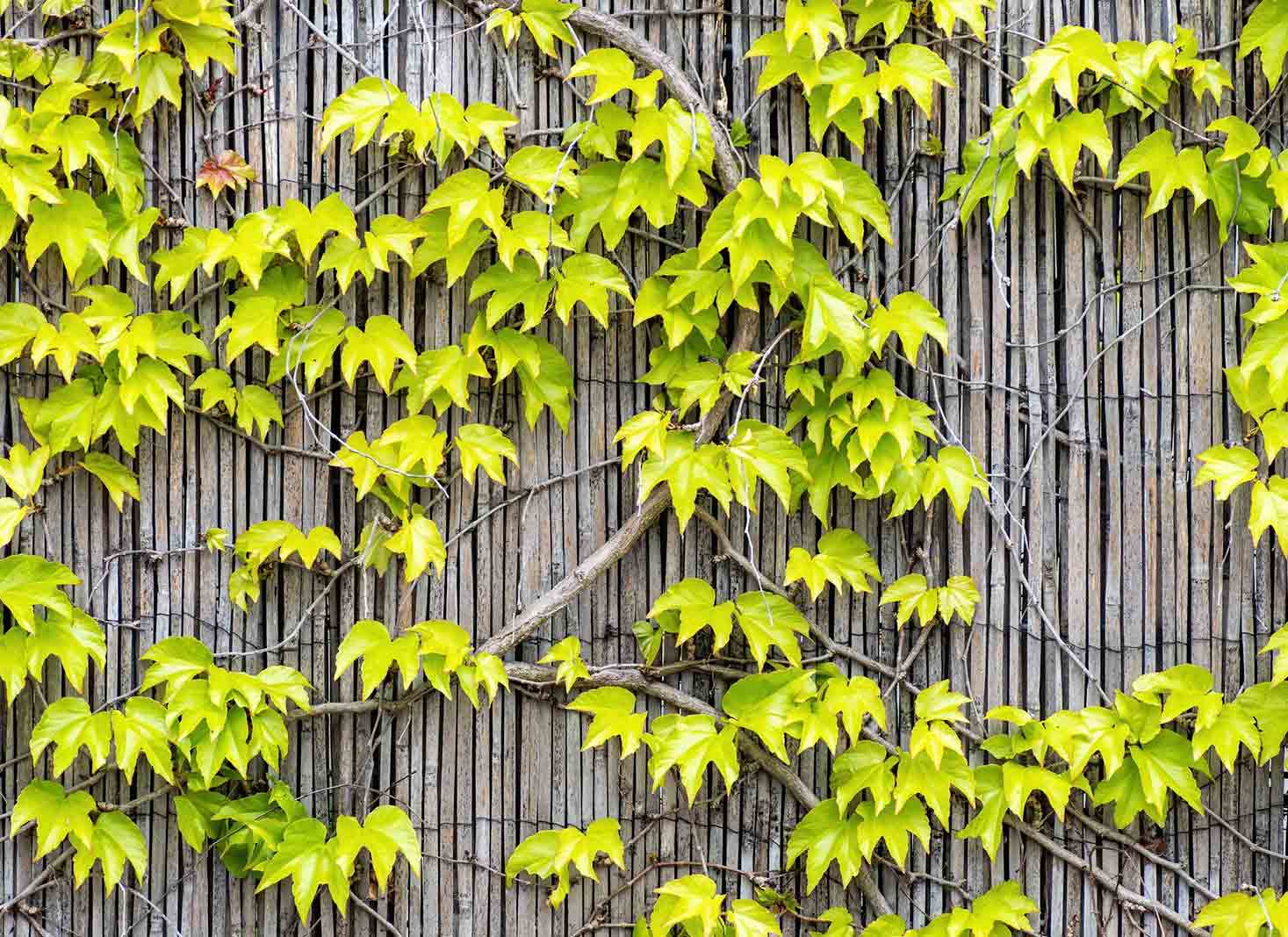
Stone is another natural material that is used frequently in privacy fences. A stone fence can be more expensive on the front end, but it is low-maintenance landscaping and easy to maintain thanks to the stone’s incredible durability.
You can create a stone wall embellished with plants and vines. These plants and vines can be planted in crevices of stone to provide a natural look. The stone can be used in addition to a shrub, grass, or tree fence or alone depending on you.
For privacy, consider making the stone wall above 6ft to keep out any onlooker’s views into the home. You can also use plants and vines to cover any blank spots and open areas in the stone wall.
2. Not all natural living fence ideas for privacy
While living fences for privacy can be made up of exclusive plants, there are other ways to still have a living fence while making use of non-living materials. These materials can be wooden posts for vines to climb, tiles and bricks recycled into a fence, wooden strips, etc.
The not-all-natural living fence ideas offer maximum privacy and are modern interpretations of what a living fence is. Your privacy living fence doesn’t have to be constructed entirely from just one material. Here we make use of alternating symmetrical elements, such as fencing and planting to create pattern and rhythm in the garden.
There are several ideas for all-natural privacy fences. They include;
I. Metal posts & vines
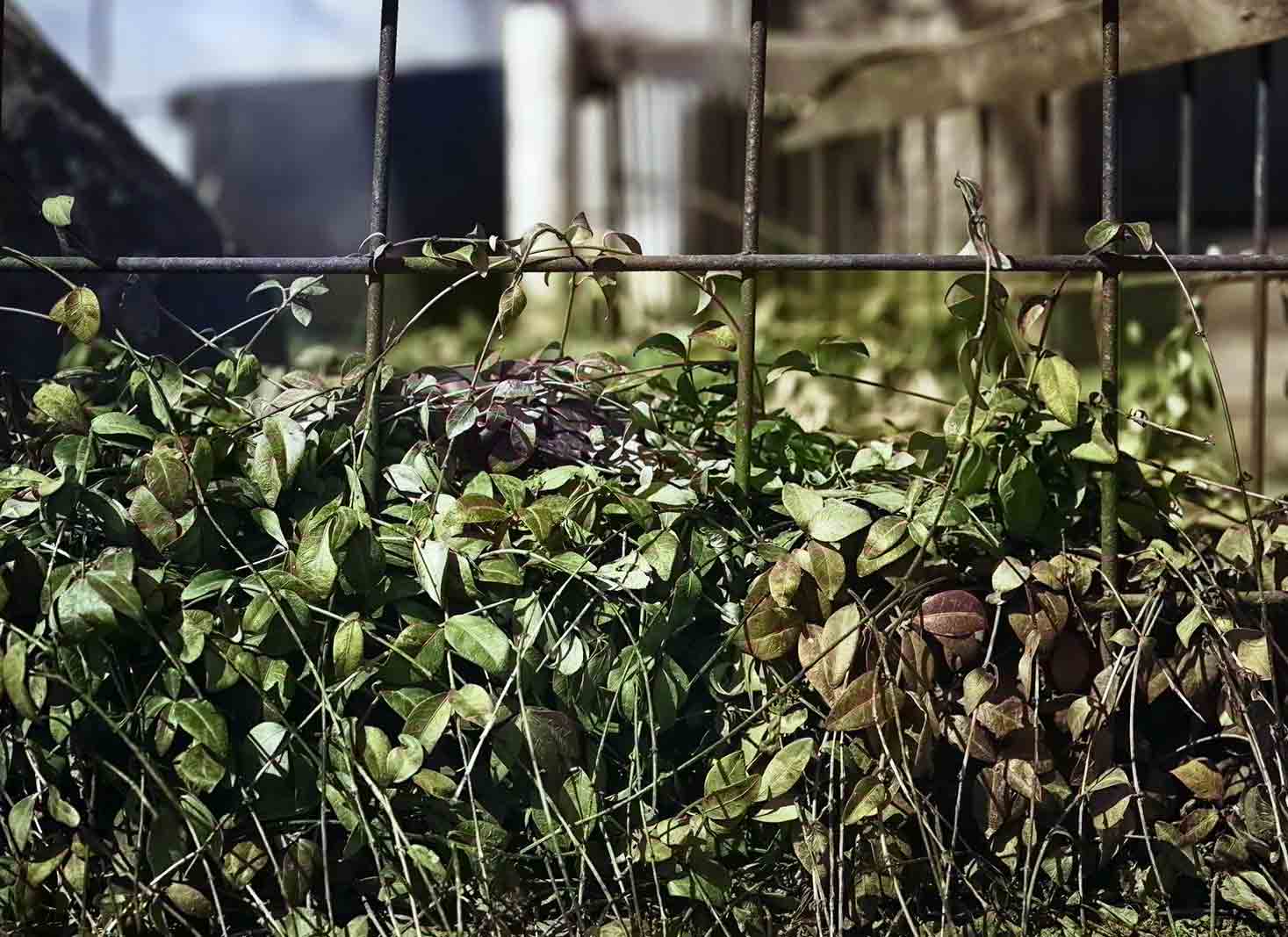
Metal posts are a very good addition to a living fence. They serve as support for so many beautiful climbing and scrambling vines. Vines are one of the best plants for a living fence but often require external support to grow as required.
Some vines are flowering plants and produce beautiful blooms. They can also be arranged as seen fit. You can use different types of metal posts from thin poles to large hollow poles. They produce different effects although larger metal posts allow for more privacy.
You can also metal posts to spice up a wood fence and add contrast to the structure. Some of the vines that can be used in this method include; Dutchman’s Pipe, Trumpet vine, Clematis, and Climbing Hydrangea. Honeysuckle, Wisteria, etc.
II. Recycled fences & shrubs
Recycled fences are some of the best fences out there. The fence is made using recycled materials like leftover tiles, beams, unused metal or wall sheet paneling, etc. You can hire a contractor to help put together some recycled building materials to make a fence.
The fence can then serve as additional barriers with shrubs and vines. It is a very good option, especially for people with dogs and little kids that require a physical border that keeps them in. You can also grow vines around a recycled fence.
Painting the fence a dark color can help the plants to pop and be the center of attention. Some of the best plants to grow alongside recycled fences include; Clematis, Cucumbers, Nasturtium, Bamboo, Kentucky Wisteria, Climbing Roses, etc.
III. Hanging wooden baskets & flowering plants
Planting a living privacy fence can take years as the plants need time to grow into maturity. For a quick living fence, you can simply plant already-grown plants in a flower pot or wooden basket to a wire fence. This approach is very untraditional but it gives the fence an immediate green effect that natural living fences can’t.
This is best if you have a wire fence or a wooden fence. Simply place colorful plants in wooden baskets and hang the baskets in any pattern for an aesthetic effect. In a small yard, a fence makes a good spot to go vertical with plants.
Hanging flower baskets not only look great but save garden space at the same time. Some of the best hanging basket plants include; Begonia, Fuchsias, Petunias, Bacopa, Lobelia, etc.
IV. Wooden lattice fence & plants
Wooden Lattice fences are made out of thin strips of wood interlaced in a crisscrossed pattern. While this fence can be used as is, there is no harm in brightening it up with some plants. Vines are especially good for wooden lattice fences as they grow between the crisscrossed pattern.
Lattice fences can be used sparingly within a yard for a decorative effect or run along a property line like more traditional privacy fencing. Lattice fencing inside the yard is a terrific choice for green thumbs. Wood lattice is the best type of lattice for crafting because it’s inexpensive and easy to work with.
You can dress up a dull wooden lattice fence by planting a garden(shrubs & vines) right along the fence line. Some of the best plants for wooden lattice include; Ivy, Bougainvillea, Jasmine, Honeysuckle, Clematis, Climbing Roses, Wisteria, Climbing Hydrangeas, etc.
V. Wire fence with plants
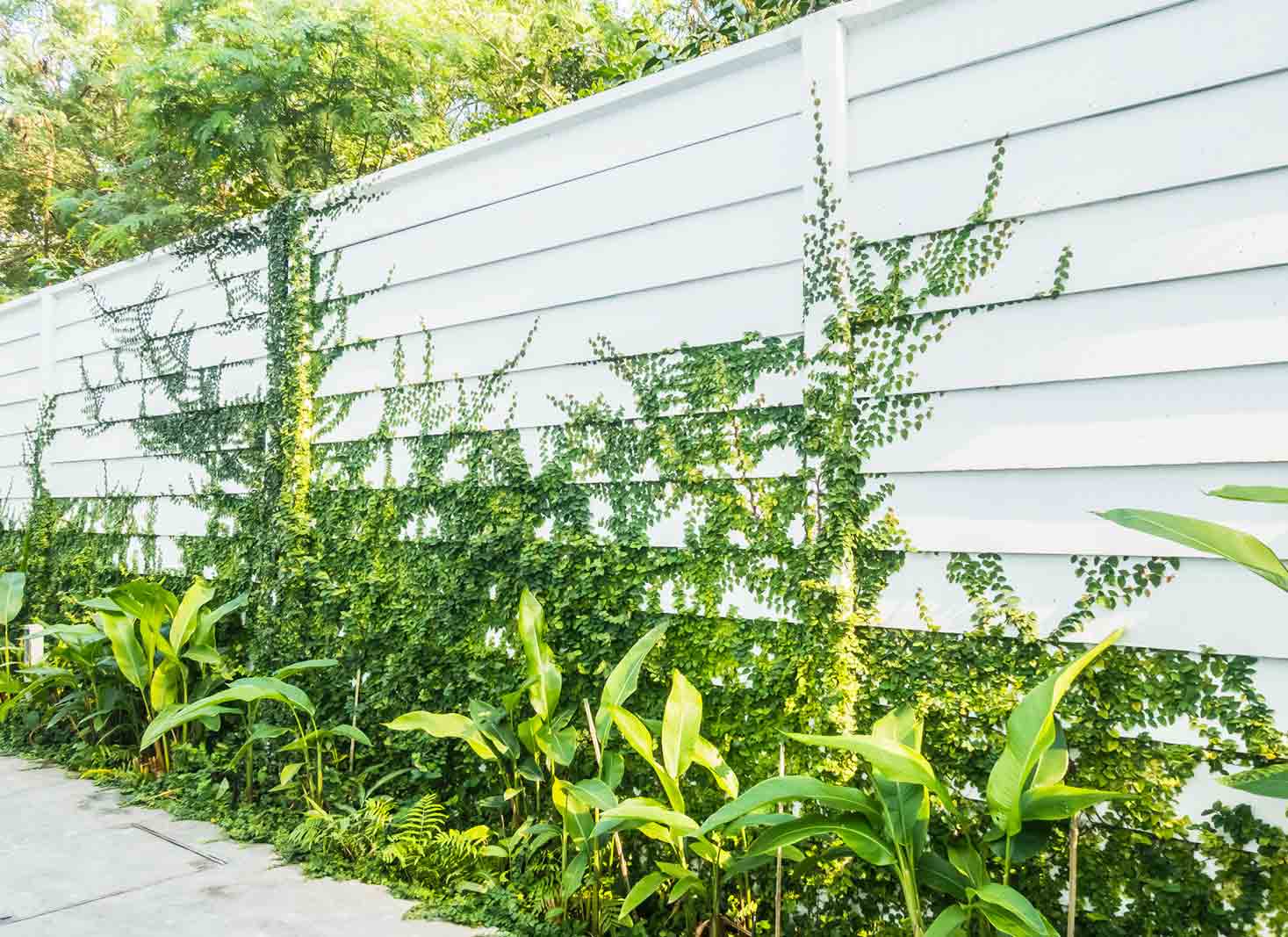
While wire fences may be sturdy, they can be ugly and you may want to hide them. This can be done in two ways. One, by planting a line of trees or shrubs in front or behind the wire fence. Some people make the mistake of thinking that a privacy fence should go at the edge of the property, but you could pull in the fence around the exact area where you want privacy
Another way to plant a living fence with wire fencing is by planting vines on it so they have support and can grow to cover the wire. Any way you choose, you get to improve your fence and add a pop of greenery to your home. While natural fences may seem the best, if you have little kids or pets that require a secure boundary, this may be a good option for you to consider.
VI. Regular fence with living wall
Living fences don’t always have to be just planted. A living wall is a very good way to incorporate plants into your fence while providing maximum privacy and adding that freshness plants give. A living wall is usually planted on a preexisting wall that can be built as high as possible.
Green walls do not require much maintenance as they usually have an automated irrigation system installed within them. This allows the plants to maintain their freshness with little effort from you.
Trimming the plants back every so often is the only maintenance they require to keep them healthy. Some of the best plants to make a living wall with include; Ferns, Bromeliads, Succulents, Vines, Air Plants, Herbs, etc.






